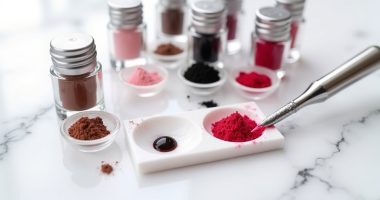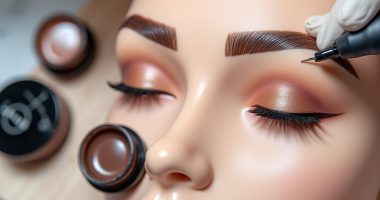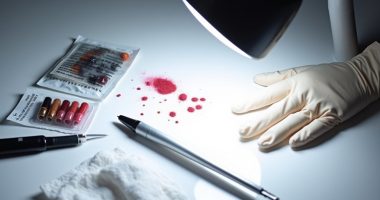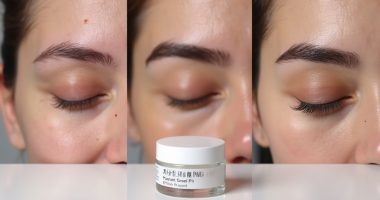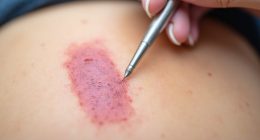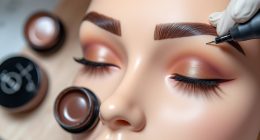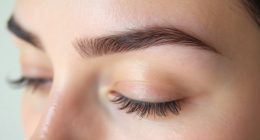Permanent makeup implants pigment into the dermis layer, lasting one to three years. The process starts with consultation, followed by a procedure taking one to three hours. A topical anesthetic helps with discomfort. Initial results appear darker before fading 50-75% during healing. Aftercare is essential—keep the area clean, dry, and ointment-applied. Risks exist: allergic reactions, infections, color changes. Not for pregnant women. Artist credentials matter, big time. The details make all the difference.
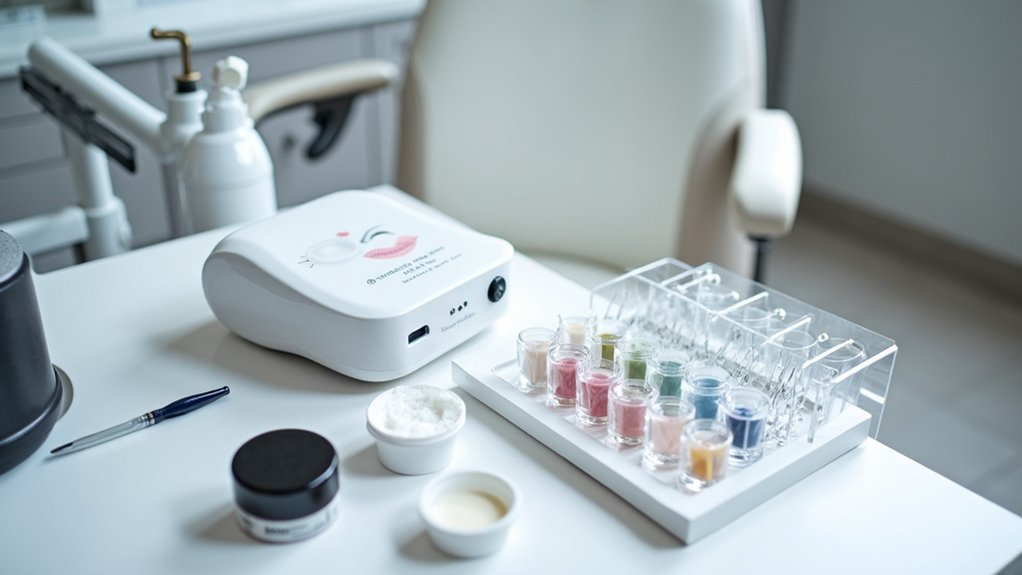
While most people spend precious morning minutes applying makeup, others wake up already wearing it. Permanent makeup, also known as cosmetic tattooing, has revolutionized beauty routines for countless individuals. The procedure implants pigments into the dermis layer of skin, creating semi-permanent effects that typically last between one and three years. No more rushing to apply eyeliner before work. No more smudged makeup after swimming.
The journey begins with a client consultation. This isn't just a quick chat. It's an essential planning session where desired outcomes are discussed in detail. Artists need to understand exactly what clients want—natural-looking brows or bold definition? During this time, clients receive instructions to avoid blood thinners, alcohol, and caffeine for 24-72 hours before their appointment. Stay hydrated. Keep skin moisturized. Simple steps that make a big difference.
Success begins with preparation. Know what you want, follow pre-care instructions, and arrive ready for transformation.
On procedure day, expect to spend between one and three hours in the artist's chair. First, a topical anesthetic numbs the area. Thank goodness for that. The artist then maps and pre-draws the design for approval. Only when the client gives the green light does the actual tattooing begin. Most clients describe the sensation as vibrations rather than pain. Using sterile, disposable tools, the artist carefully deposits pigment into the skin. It's meticulous work.
Afterward, things look intense. Really intense. The treated area appears up to 30% darker initially, and swelling is common during the first 48 hours. Scabbing and flaking? Totally normal. The color actually fades 50-75% during the first week of healing. This isn't a defect—it's part of the process.
Aftercare tips are straightforward but non-negotiable. Keep the area clean and dry. Apply the recommended ointment exactly as directed. Skip makeup on the treated area for several days. No swimming or saunas for 7-10 days. Proper aftercare ensures color integrity and reduces the risk of infection. Seems excessive? Not if you want ideal results.
Like any cosmetic procedure, permanent makeup comes with risks. Allergic reactions happen. Infections occur when proper sterilization isn't followed. Colors can change over time. And sometimes, clients simply aren't happy with the results. It's not for everyone. Pregnant or nursing? Wait. It's crucial to verify your artist has completed proper training and certification, as requirements vary significantly by state and some practitioners may have minimal experience.
For many, the convenience of waking up "ready" outweighs these considerations. No more daily makeup routines. Just roll out of bed and go.
Frequently Asked Questions
How Painful Is Permanent Makeup During Application?
Pain during permanent makeup varies wildly from person to person. Some barely notice it. Others? Not so lucky.
Technicians use various pain management techniques like numbing creams and breaks when needed. Client experiences range from "just a tickle" to "seriously uncomfortable," especially for lip procedures.
Eyebrows hurt least, lips hurt most. That's just how it goes. Music and conversation help distract from the buzzing sensation that comes with the territory.
Can Permanent Makeup Be Removed if I Don't Like It?
Yes, permanent makeup can be removed. But it's not easy.
Tattoo regret happens—you're not alone. Most removal requires multiple sessions (2-5 typically) spaced 8-12 weeks apart. Options include laser, saline, chemicals, or even surgery.
Complete removal? Not guaranteed. Results vary based on pigment color, depth, and your skin type. Costs add up fast, usually exceeding what you paid initially.
Scarring possible. Not exactly a quick fix.
Will My Permanent Makeup Look Natural?
Natural appearance depends entirely on artist skill. Period.
Good technicians precisely match colors to complement skin tone, creating results that look like you woke up "just like that."
Skilled pigment placement mimics real features—no Sharpie eyebrows here. Microblading creates believable hair-like strokes. Powder techniques offer softer looks.
Truth is, the best permanent makeup shouldn't scream "permanent makeup." Most people won't even know unless you tell them.
How Often Does Permanent Makeup Need Touch-Ups?
Permanent makeup isn't forever-forever. Touch-up frequency varies wildly.
Initial touch-ups happen 4-8 weeks after the procedure, then typically every 1-3 years after that. Your maintenance schedule depends on skin type, sun exposure, and lifestyle.
Oily skin? More frequent visits. Lips fade faster, needing refreshers every 6-12 months.
When color looks patchy or definition disappears, it's time. Some people are shocked when their "permanent" makeup starts fading.
Nothing lasts forever, folks.
Are There Any Medical Conditions That Prevent Getting Permanent Makeup?
Several medical conditions absolutely rule out permanent makeup.
Pregnancy, active skin conditions in the treatment area, uncontrolled diabetes, heart issues—all big no-nos.
Got a pacemaker? Forget about it.
Some folks need doctor's approval—people with autoimmune diseases, blood disorders, or post-chemotherapy patients.
Prone to allergic reactions? Proceed with caution.
Certain skin conditions make permanent makeup risky business.
And if you're under 18? Wait your turn, kid.
Safety first. Always.


